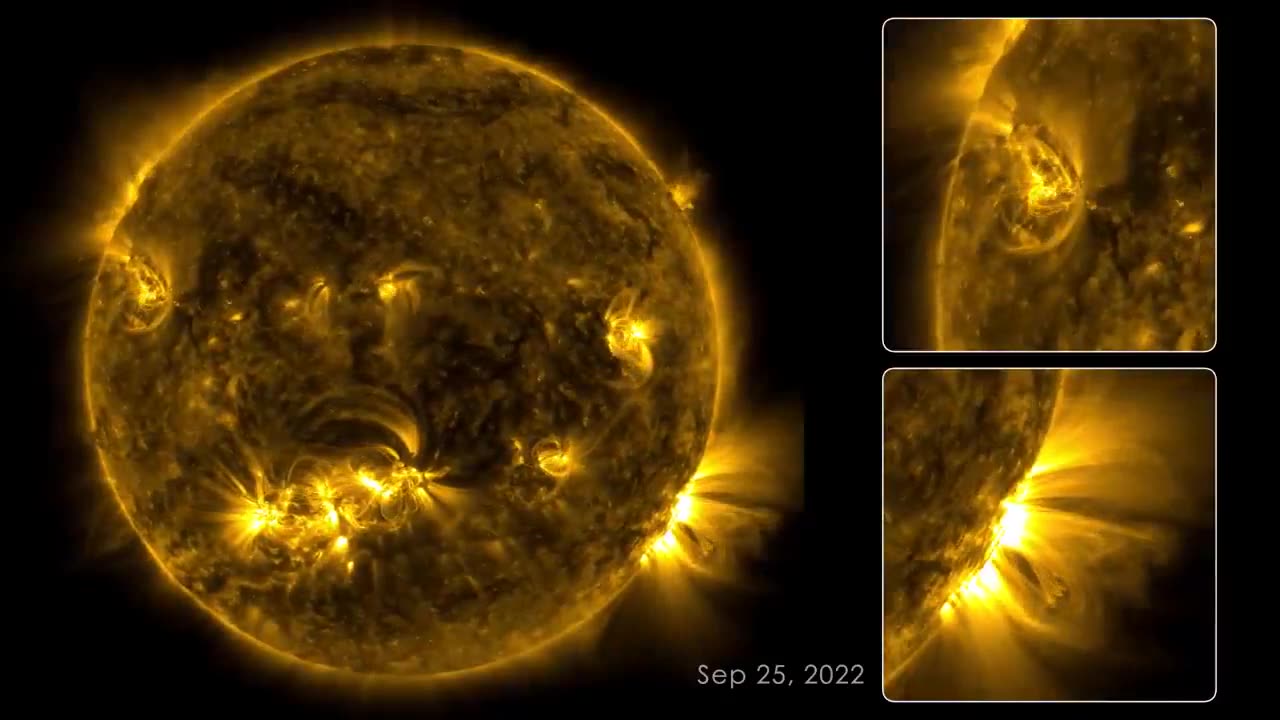Premium Only Content

133 days on sun
The Sun is a massive, hot, and luminous ball of gas primarily composed of hydrogen and helium. It is the central star in our solar system and plays a crucial role in providing heat and light to Earth. Over a span of 133 days on the Sun, various dynamic processes occur, including the following:
1. Solar Flares: The Sun experiences frequent bursts of energy known as solar flares. These intense releases of radiation can impact space weather and communications on Earth.
2. Sunspots: Sunspots are dark, cooler areas on the Sun's surface caused by magnetic activity. They appear in cycles, and their number and distribution change over time.
3. Solar Wind: The Sun constantly emits a stream of charged particles called the solar wind. This wind carries material from the Sun's atmosphere into space and affects the Earth's magnetosphere.
4. Solar Eruptions: Occasionally, the Sun experiences massive eruptions called coronal mass ejections (CMEs). These events release enormous amounts of energy and can disrupt satellite communications and power grids on Earth.
5. Nuclear Fusion: In the Sun's core, nuclear fusion processes occur, where hydrogen atoms combine to form helium, releasing an immense amount of energy in the form of light and heat.
6. Photosphere: The Sun's visible surface, known as the photosphere, appears as a glowing disc. It emits most of the Sun's visible light and has an average temperature of about 5,500 degrees Celsius (9,932 degrees Fahrenheit).
7. Solar Rotation: The Sun doesn't rotate uniformly; it exhibits differential rotation, with its equator rotating faster than its poles. This causes changes in the Sun's magnetic field over time.
Throughout this 133-day period, these processes continue to shape the Sun's dynamic behavior, influencing its activity and its impact on our solar system.
-
 LIVE
LIVE
xBuRnTx
1 hour agoWho's Ready for New Years!
660 watching -
 12:09
12:09
Tactical Advisor
13 hours agoSmith & Wesson Shield Plus Carry Comp
1.41K -
 4:35:25
4:35:25
Father Russell
6 hours agoDelta Force | Not A Woman? | Mad Martigan Time
38.5K1 -
 3:29:42
3:29:42
BrookieMonster
13 hours ago $43.52 earnedChristmas Stream: Marvel Rivals with CallmeSeags 🎄
164K29 -
 LIVE
LIVE
TheSaf3Hav3n
3 days ago| RUMBLES FIRST SUBATHON IS HERE!!! | DAY 4 |
587 watching -
 6:54
6:54
Dr. Nick Zyrowski
1 hour agoHIGH PROTEIN DIET Fixes Your Metabolism! - Weight Loss Not Required
8.01K5 -
 3:14:33
3:14:33
Joe Donuts Gaming
15 hours ago🟢 Live : Christmas is Here!! | Fortnite, Caroling, Light Tours and Donos !!
87.2K15 -
 6:02:38
6:02:38
CLUJ
14 hours agoCHRISTMAS EVENING HYPE!! LETS HAVE FUN GAMING!!
69.3K7 -
![I AM FINALLY BACK :: PUBG: BATTLEGROUNDS :: RUMBLE NOW HAS GIFTED SUBS!!! [Merry Christmas] {18+}](https://1a-1791.com/video/fwe1/22/s8/1/e/f/C/6/efC6v.0kob-small-I-AM-FINALLY-BACK-PUBG-BATT.jpg) 9:57:19
9:57:19
a12cat34dog
16 hours agoI AM FINALLY BACK :: PUBG: BATTLEGROUNDS :: RUMBLE NOW HAS GIFTED SUBS!!! [Merry Christmas] {18+}
61.7K8 -
 3:55:42
3:55:42
STARM1X16
16 hours agoMerry Christmas Fortnite
132K11